Can Hamsters Eat Grasshoppers?
As omnivores, hamsters require a diet rich in various essential nutrients and well-balanced. Even though their basic diet is based on seeds, vegetables, fruits, and grains, giving them more protein might be beneficial. That’s why the question arises: can hamsters eat grasshoppers?
Yes, but there are a few crucial variables to consider.
The owner of hamsters should be aware of their nutritional requirements. Particularly the premium sources of protein for them. It is uncommon for these little rodents to live in captivity. However, understanding their digestive system and the food you pick for them is essential. Furthermore, remember to feed them in a limited amount.
Like mealworms and crickets, grasshoppers supplement a hamster’s diet with additional protein, like seeds, grains, and nuts. In this detailed study, we learn about the nutritional advantages, suggestions, and safety measures related to feeding grasshoppers to your hamster.
Recognizing Safe Protein Sources for Hamsters
A key component of a hamster’s diet is Protein. However, picking the right source might be difficult. On the other hand, some hamster owners choose live or dried insects for their pets. Some use ready-made mixes that may be purchased at pet shops.
To guarantee ethical sourcing and reduce any possible health hazard, choose safe breeds of insects. Furthermore, too much protein can cause digestive issues. So, give your pets protein foods in limited quantities. This might lead to different health issues.
Related Resource: Can Hamsters Eat Peppers?
Why Grasshoppers?
It is important to know the health benefits of grasshoppers for hamsters is important. Then, go further into its details. These small, bursting insects provide an excellent amount of protein. It can be added to your hamsters’ meals.
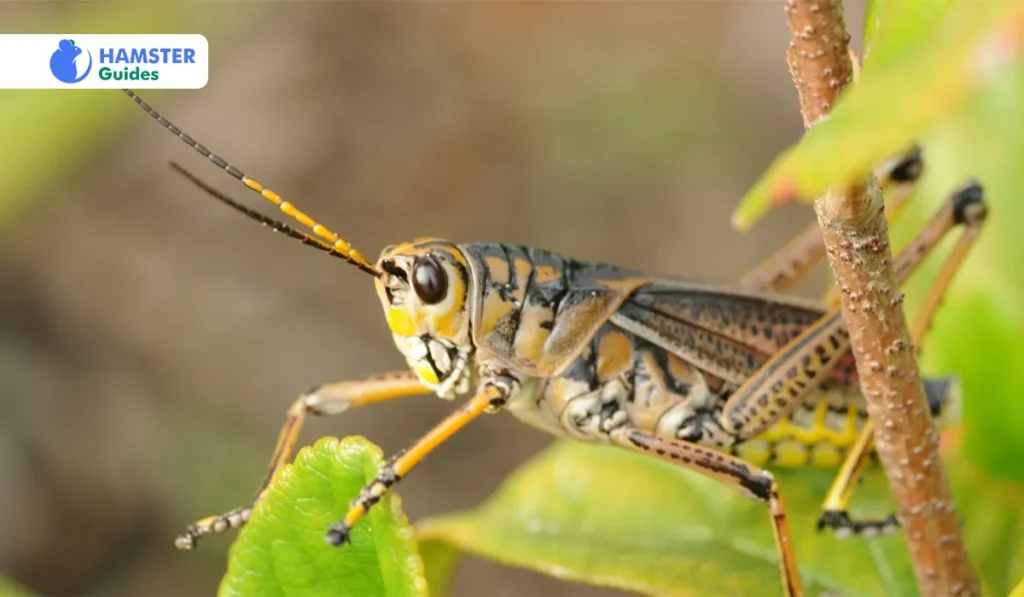
Also, it can become a part of their basic food. It aids in their general health, growth, and development. Grasshoppers provide many vital nutrients along with protein. This ensures a diverse and well-balanced meal for our little furry pet.
Related Resource : Can Hamsters Eat Raisins?
Nutritional Needs of Hamsters
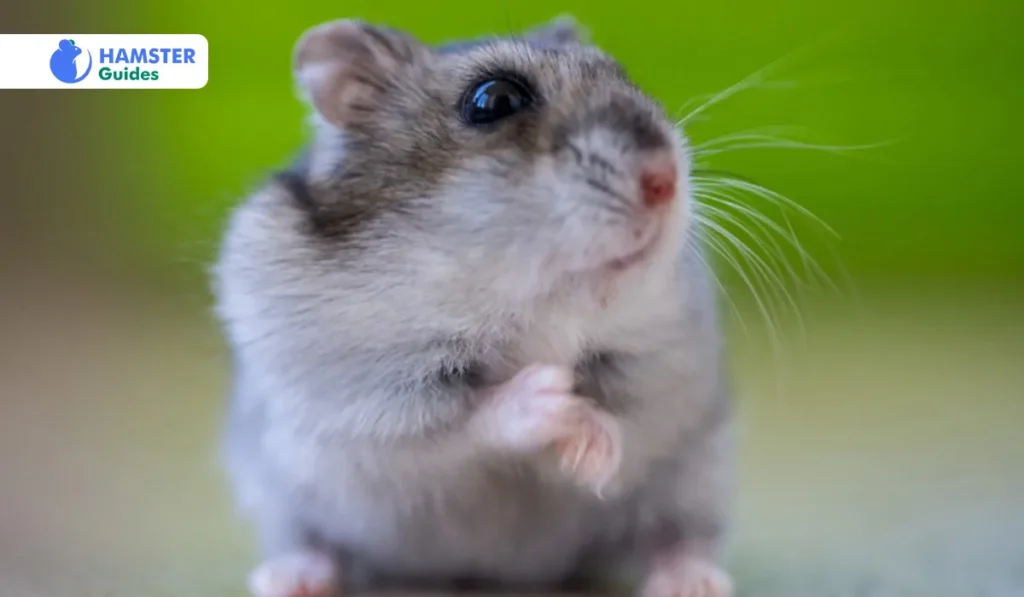
Hamsters need nutrient-rich food to remain healthy. Fats, protein, minerals, vitamins, and carbs are necessary for their meals. Vitamins and minerals are essential for a strong immune system, healthy metabolism, and general health.
Carbohydrates provide them with energy. Protein is necessary for muscle growth and tissue regeneration. You may find these nutrients in grains, nuts, seeds, insects, fruits, and vegetables.
Read More: Can Hamsters Eat Bird Food?
Nutritional Values of Grasshoppers for Hamsters
| Nutrient | Amount |
| Carbohydrate | 8g |
| Protein | 20g |
| Fiber | 3g |
| Fat | 6g |
| Phosphorus | 200mg |
| Calcium | 25mg |
Important note: This table is only for informative purposes. These can vary depending on the type of grasshopper and other factors. However, you must be sure you’re buying grasshoppers from a trustworthy and safe vendor.
Additional information: Add different protein snacks to avoid boredom and guarantee a well-rounded nutritional intake. Such as adding mealworms or crickets with grasshoppers.
Choosing the Right Grasshoppers: Safety First
The origin of grasshoppers is the main factor to be worried about. Never grab the wild grasshoppers since they might carry dangerous pesticides and parasites. On the other hand, commercially prepared, dehydrated grasshoppers can be used at most pet stores.
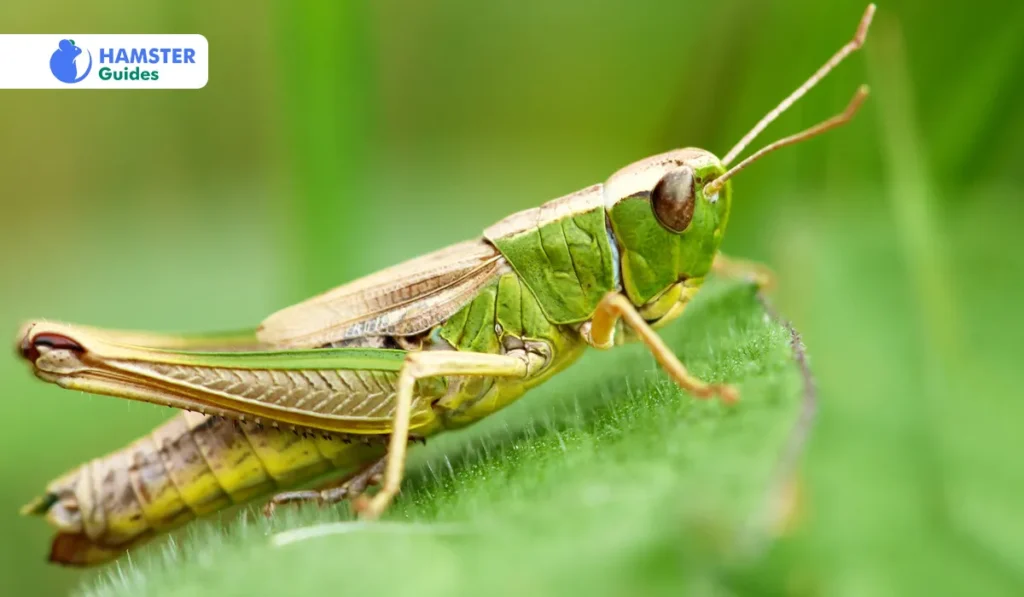
These are produced solely by bred for tiny animals and reptile consumption. It’s crucial for their safety and hygiene. It helps to preserve their nutritional content. It also guarantees that the grasshoppers are free from dangerous chemicals and pesticides.
Read More: What Kind Of Cheese Can Hamsters Eat?
Dried or Live? The Choice is Yours
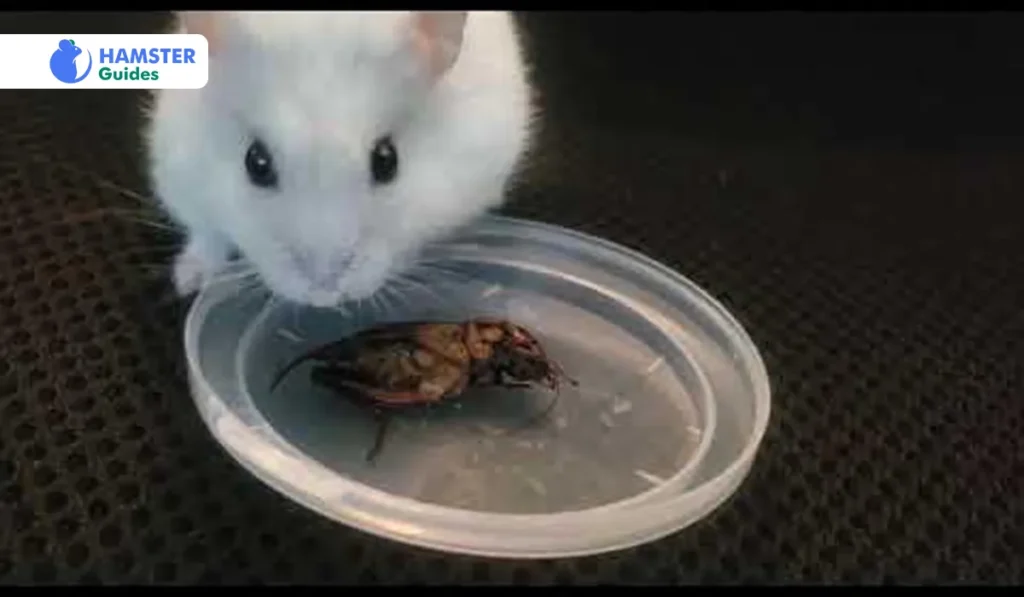
Live or dried grasshoppers are commonly available at pet stores. However, live grasshoppers may awaken your hamster’s instinct of hunting. Dried grasshoppers are less messy and easy to store. You can choose according to your preference. Ensuring that grasshoppers are right in size, fresh, and mold-free is crucial.
Additional information: Keep dried grasshoppers in an airtight container in a cold and dry spot to preserve freshness.
Feeding Practices of Grasshoppers in Hamsters
So that you’ve chosen the right grasshoppers, it’s time to add them to your hamster’s diet. Start with little amounts and see how your hamsters react. While some hamsters might like the excitement of chasing live grasshoppers, others would find the dried grasshoppers more convenient.
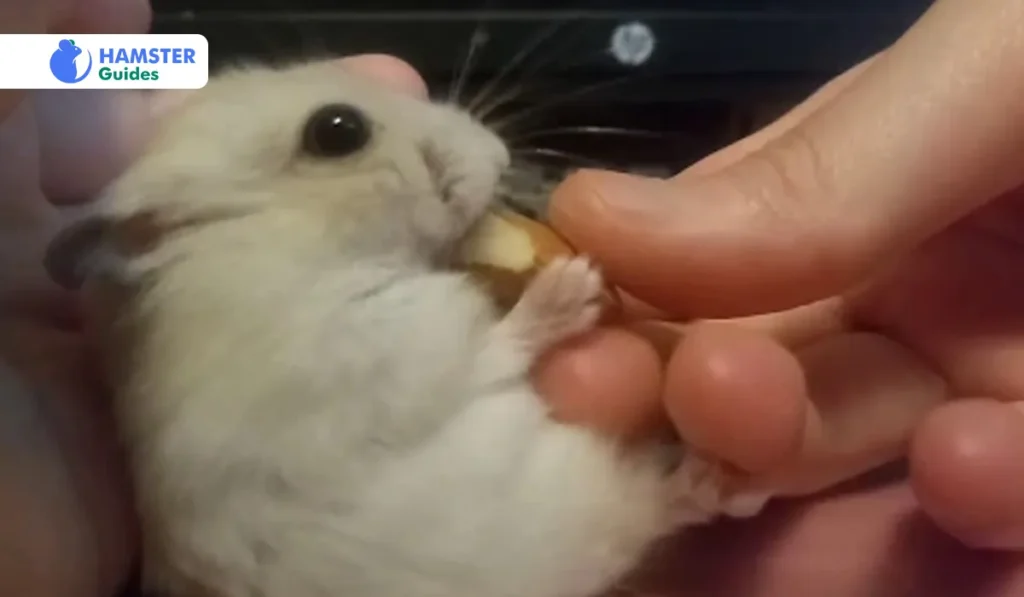
For many hamsters, freshly brought dried grasshoppers are too big. Reduce their size and cut them into small chunks to prevent choking concerns in small hamsters like dwarf. Add a little quantity and see how your hamster responds. You may provide grasshoppers as an occasional treat to your hamsters. So they can have it without any danger of digestive upset.
Read More: Can Hamsters Eat Crackers?
Alternatives to Grasshoppers
There are many substitute protein sources that you can use. At the same time, you’re not comfortable giving your hamster grasshopper. Crickets, mealworms, and superworms can be frequently used to enhance your hamster’s meal.
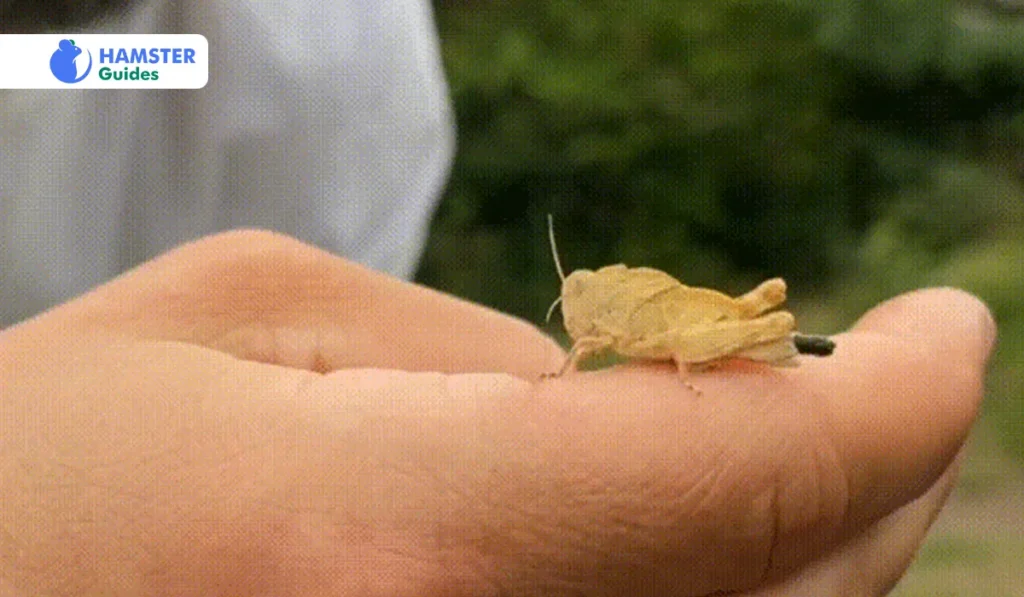
These species are generally accessible and thought to be safe for hamsters. But remember to stick to moderation. However, protein is an essential element of your hamster’s diet. It should only be given in small amounts and as a part of a balanced diet.
Grasshoppers vs. Other Insects
| Insect | Comparison | Characteristics and Considerations |
| Mealworms | Have equal protein content to grasshoppers. | Add variety to the food with a different texture and flavor |
| Crickets | Equivalent in nutritional values with grasshoppers. | Hamsters may have different preferences, it allows them a varied insect intake. |
| Dried vs. Live Grasshoppers | Dried grasshoppers are easy to take and have a longer shelf life. Live grasshoppers are given the opportunity for hamsters to express natural hunting behaviors. | Improve mental activities but are less convenient than dried options. |
The Final Words
A varied diet that contains several nutrients, including protein, is necessary for hamsters. Grasshoppers should be obtained responsibly and in moderation because these are a great source of protein. Superworms, mealworms, and crickets are some substitutes that are commonly accessible and excellent sources of protein. If you have any questions or concerns regarding your pet’s food, speak with a veterinarian or veterinary nutritionist.

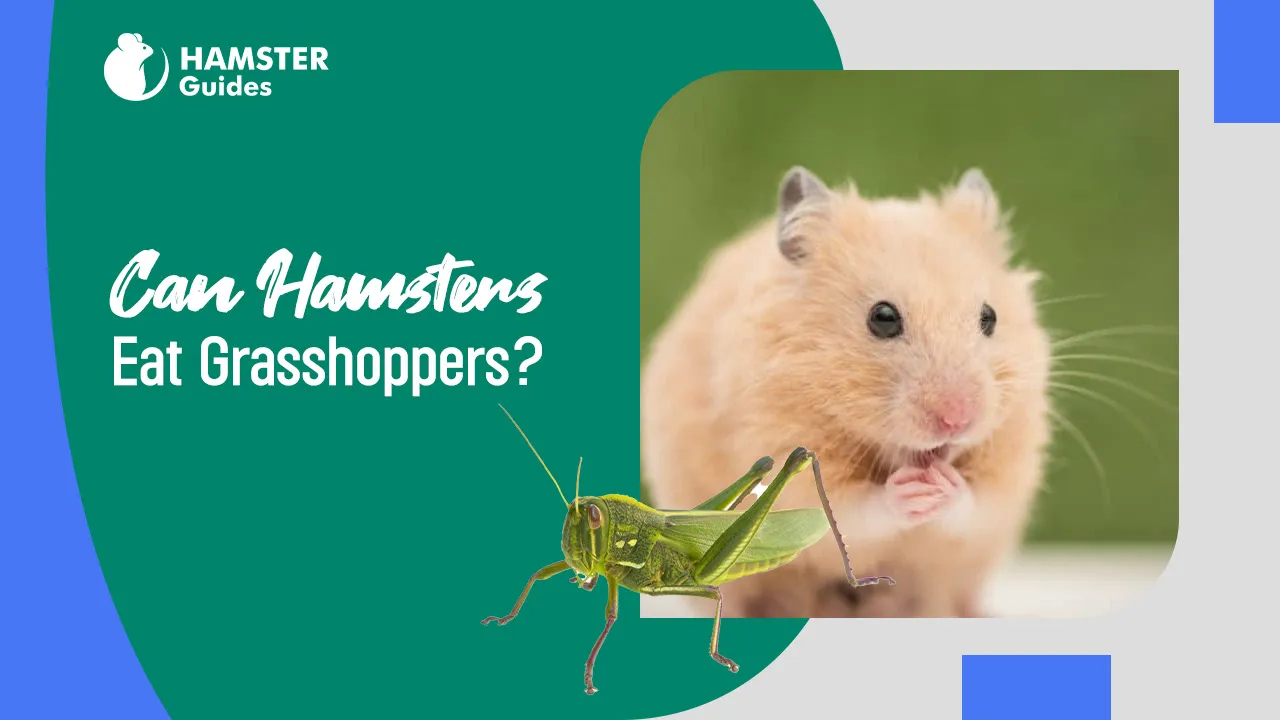







Leave a Reply